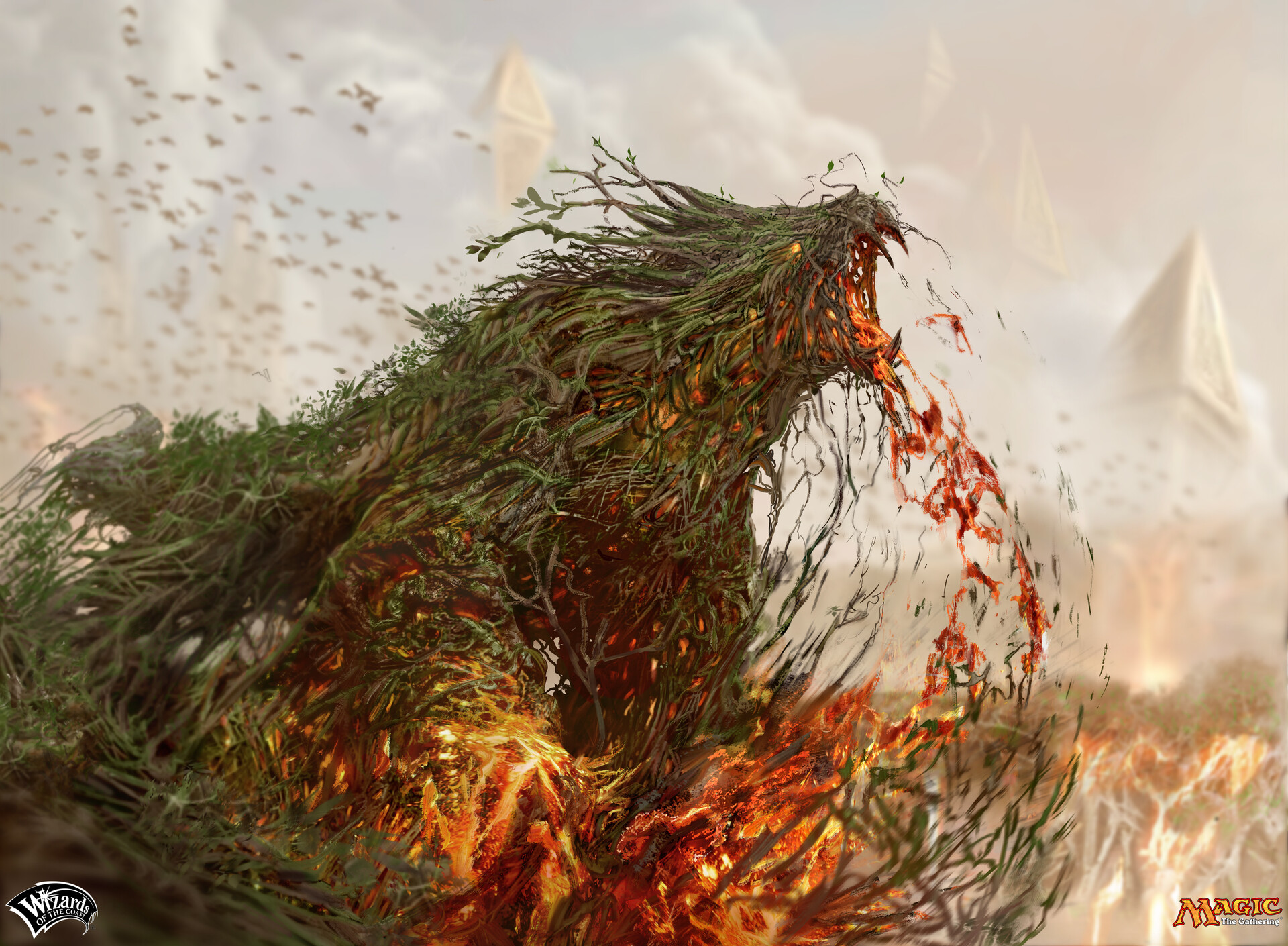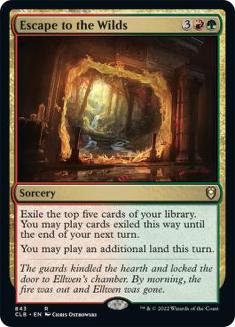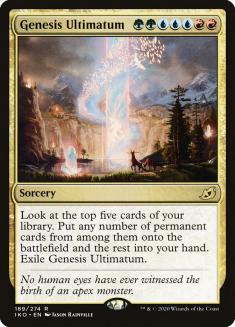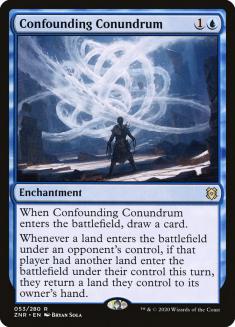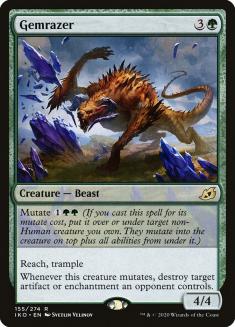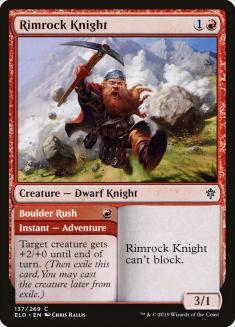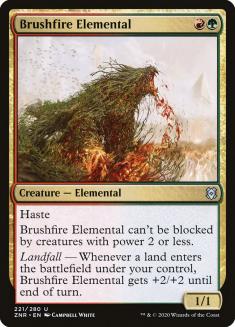Sometimes you have to go looking for your testing group, and sometimes, it finds you.
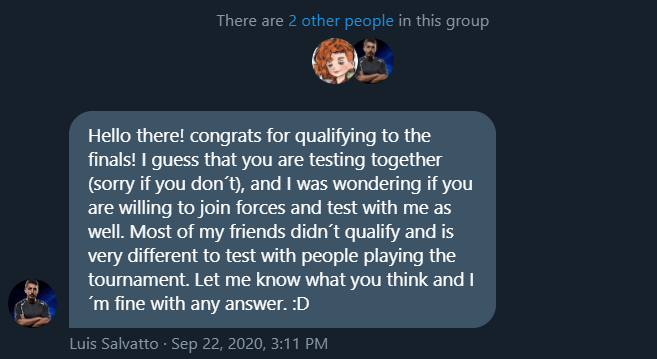
For the Grand Finals, my testing team was composed of Autumn Burchett (a given by now), Luis Salvatto, and Piotr “Kanister” Gloglowski. Despite most of us having never worked together before, we made it work and made incredible progress in tuning our lists over the last few weeks, largely in part because of our process.
With the Grand Finals consisting of the Top 16 from the Players Tour Finals and the Mythic Invitational, it’s the best of the best from the 2020 partial season of Organized Play, and is the most stacked field of any tournament I’ve ever played. It being a split format tournament, between Zendikar Rising Standard and Historic, means that having extra teammates to work with is incredible.
With Autumn Burchett covering her contributions to our Historic Four-Color Ramp list next week, I’ll just drop that decklist here, and move on to what we did in Standard.
Creatures (14)
- 4 Lotus Cobra
- 1 Kenrith, the Returned King
- 3 Uro, Titan of Nature's Wrath
- 4 Omnath, Locus of Creation
- 2 Yasharn, Implacable Earth
Planeswalkers (1)
Lands (20)
Spells (25)

Goal-Oriented Thinking
For Zendikar Rising Standard, our group had to wait for a week or so until the banning of Uro, Titan of Nature’s Wrath of confirmed. From there, we got to work. Off the heels of the ban itself, the common consensus within the community was that Uro’s banning did little to move the needle on Omnath’s dominance. That meant our opening talks largely consisted of different flavors of “We know Omnath is the best deck. So does everyone else. How do we use that information?”
One of the first rabbit holes this led us down was “What does the anti-Omnath Omnath deck look like?” Which led us to one of the variants of Omnath that lost the least from the banning: Dylan Donegan’s mill-centric take on Omnath that he took down the Standard challenge with the day before.
Creatures (18)
- 4 Lotus Cobra
- 1 Uro, Titan of Nature's Wrath
- 2 Dryad of the Ilysian Grove
- 4 Ruin Crab
- 4 Omnath, Locus of Creation
- 3 Glasspool Mimic
Lands (14)
Spells (28)
- 5 Forest
- 1 Plains
- 2 Mountain
- 4 Island
- 4 Cultivate
- 4 Escape to the Wilds
- 4 Genesis Ultimatum
- 4 Spikefield Hazard
Sideboard

After playing a few matches with this deck, I was unsurprisingly happy with the deck’s matchup against more traditional versions of Four-Color Ramp. That led me going a bit further down the rabbit hole trying to build the most anti-Omnath/Crab deck I could imagine:
Creatures (21)
- 4 Lotus Cobra
- 1 Kenrith, the Returned King
- 4 Dryad of the Ilysian Grove
- 4 Ruin Crab
- 4 Omnath, Locus of Creation
- 4 Glasspool Mimic
Planeswalkers (1)
Lands (20)
Spells (38)

This list has maindeck copies of Confounding Conundrum and Mystical Dispute, and the extra cards in deck make it harder to lose to opposing Ruin Crabs. It only took a few games to find a real problem: the lack of consistency in the deck takes a nosedive when you add twenty extra cards. Who knew?
At its core, Omnath decks are simply trying to grow their proverbial snowball (read: total number of resources) as much as possible. To that end, all of the cards in the deck should contribute to that or be somewhat interactive. This means that in mirrors, simply growing one’s snowball is frequently going to be worth far more than restricting the opponent’s growth.
This is largely on the back of the fact that the best interactive cards are temporary. They don’t translate well into the later stages of the game, and with too much of this interaction, there isn’t a cohesive plan to build towards. That makes the copies of Escape to the Wilds and Genesis Ultimatum worth drastically less than copies in a leaner, more proactive version of the deck.
The next step was experimenting with decks that historically had poor matchups against the decks that Omnath pushed out — that’s to say, decks that struggled against Omnath’s explosiveness or ability to grind. This originally took us to looking at Dimir Rogues:
Creatures (20)
- 4 Vantress Gargoyle
- 4 Brazen Borrower
- 4 Thieves' Guild Enforcer
- 4 Merfolk Windrobber
- 4 Soaring Thought-Thief
Lands (13)
Spells (27)

There’s a lot being tested out here, but the biggest takeaways were that Vantress Gargoyle was somewhat impressive and Zareth San, the Trickster was too situational relative to its payoffs. Most of the fights that Dimir Rogues were trying to pick were on the mana advantage front, so having a spell that cost a ton of mana and took the Rogues pilot out of position were dealbreakers.
Unfortunately, with Four-Color Adventures rising in popularity, it became more difficult to justify the deck. On top of the fact that Mystical Dispute tags most of the deck’s creatures, both Bonecrusher Giant and Brazen Borrower can buy too much time for the deck.
Creatures (26)
- 3 Lotus Cobra
- 4 Beanstalk Giant
- 2 Giant Killer
- 4 Edgewall Innkeeper
- 4 Bonecrusher Giant
- 4 Fae of Wishes
- 1 Brazen Borrower
- 4 Omnath, Locus of Creation
Lands (16)
Spells (18)

It didn’t take a ton of time for our group to identify that Four-Color Adventures had reasonable-to-favorable game against the entire field, save one deck: Omnath. This mean that some of us could look to fix that matchup, while the rest of us kept exploring:
Creatures (15)
Lands (14)
Spells (31)

Excavated from a Standard deck dump last week, this attractive mill deck seemed to take the better parts of our Dimir Rogues deck and the Ruin Crab-based Four-Color Ramp deck. Dodging the normal big-spell axis that most decks were trying to exploit out of Ramp and Adventures was attractive, so I took the deck for a spin.
Unfortunately, it didn’t mulligan particularly well, and needed to draw a specific mix of interaction and “burn” (read: mill) in order to win games. There was a reasonable amount of wiggle room between the two, but drawing all of one half or the other spelled doom, and the linear nature of the deck made it hard to play much in games where there wasn’t an adequate mix. Couple that with the fact that the deck was soft to the Mystical Dispute / Negate package decks were bringing against Omnath and didn’t mulligan well, and it’s easy to see why it was shelved.
At this point, the team started questioning if we were treating certain aspects of archetypes as sacred, when we shouldn’t. We temporarily considered Temur Adventures, but decided that it was sacrificing a ton of equity in the Omnath matchup to shore up matchups we weren’t entirely expecting to show up. Then, results from the weekend started to manifest, with ChannelFireball’s CFB Clash Day 1 results being public:

Mono-Green Aggro putting up reasonable results was a bit of a surprise, but worth exploring:
Creatures (28)
- 1 Scavenging Ooze
- 4 Lovestruck Beast
- 4 Stonecoil Serpent
- 3 Yorvo, Lord of Garenbrig
- 4 Gemrazer
- 4 Drowsing Tyrannodon
- 4 Swarm Shambler
- 4 Kazandu Mammoth
Lands (3)
Spells (29)

This was the version of Mono-Green Aggro that gave the best results against specifically Omnath. It’s absolutely skewed a bit, but being soft to Four-Color Ramp was a dealbreaker, so finding a way to salvage that matchup was important.
The biggest takeaways in the match were that the deck couldn’t catch up when it fell behind, and Omnath simply being a four-mana 4/4 that drew a card was frequently good enough to kill a creature. Bonecrusher Giant also proved to be a reasonable problem whenever the deck didn’t play enough ways to simply go over the top of it. Skewing the two-drop slot to mostly ignore it didn’t fix the problem, because it just meant the deck wasn’t curving.
With a lack of interaction and explosiveness, Mono-Green was scrapped.
At this point, Kanister had been working almost the entire time on refining Ramp, and was largely happy with where he’d landed.
Creatures (20)
- 4 Lotus Cobra
- 4 Beanstalk Giant
- 1 Kenrith, the Returned King
- 3 Bonecrusher Giant
- 3 Terror of the Peaks
- 4 Omnath, Locus of Creation
- 1 Glasspool Mimic
Planeswalkers (1)
Lands (15)
Spells (24)

Terror of the Peaks was more exciting for us than Elder Gargaroth because of the immediacy it provided the turn it entered the battlefield while comboing. It providing a form of interaction meant that it actually played from another angle, where Gargaroth and Felidar Retreat (the other payoff bombs) felt like they mostly did more of the same.
Terror’s weakness to spot removal was largely offset by the fact that, outside of Lotus Cobra, spot removal isn’t particularly effective against Omnath. The Dragon’s stock also rises substantially when the ramp spell of choice is Beanstalk Giant over Cultivate — a change motivated by the rise of grindy Rakdos, Grixis, and Dimir decks, where threat density was a concern.
One of our team’s primary concerns was if players would be trying to exploit Omnath’s perceived dominance, or play the deck with the best matchups across the board in Adventures. This is relevant because Ramp generally crushed Adventures variants, and being on the wrong level could spell doom for our whole team. So we tried something a bit different:
Creatures (21)
- 4 Lotus Cobra
- 4 Beanstalk Giant
- 1 Kenrith, the Returned King
- 4 Bonecrusher Giant
- 4 Fae of Wishes
- 4 Omnath, Locus of Creation
Lands (15)
Spells (24)

Notice anybody missing? No Edgewall Innkeepers.
Autumn and I’s theory was that with the Adventures decks, you never actually ran out of gas if you include Genesis Ultimatum. This makes Edgewall Innkeeper a bit less impactful when everybody’s decks are built to check an early copy of Lotus Cobra anyway.
After a few dozen matches with the deck, it felt like it was doing something similar to its ramp counterpart, without actually being that much better at fighting the fair fight that Adventures variants are known for.
So back to ramp we went:
Creatures (16)
- 4 Lotus Cobra
- 4 Beanstalk Giant
- 2 Kenrith, the Returned King
- 2 Terror of the Peaks
- 4 Omnath, Locus of Creation
Lands (14)
Spells (30)

Kanister was happy with it and Salvatto was willing to register it. Unfortunately, I couldn’t win games with the deck. It was one o’clock in the morning the night before submission, and several consecutive days of playtesting had led me to a ton of dead ends. I found myself double-checking all of the data we had access to, and I noticed something from the weekend’s results from the CFB and Red Bull events.

We hadn’t tested Gruul Adventures, and its bad matchups were decks that we thought weren’t good enough to bring to the event. I ripped a list off the internet and asked Autumn to humor me with a few matches against Ramp.
And Gruul crushed our Ramp deck.
Total fluke, right? It has to be able to stand up to Lovestruck Beast to be a real consideration for the Level 3 deck to bring to the event.
Crushed it.
Okay, that one’s a bit hyperbolic. The games were closer, but Gruul was winning most of them. Enter several hours of energy drinks and wordless decklist updates being posted in our community Discord.
Creatures (30)
- 4 Lovestruck Beast
- 4 Robber of the Rich
- 4 Edgewall Innkeeper
- 4 Bonecrusher Giant
- 4 Stonecoil Serpent
- 2 Rimrock Knight
- 4 Gemrazer
- 4 Kazandu Mammoth
Lands (8)
Spells (22)

- Turntimber Symbiosis as a spell isn’t impactful enough for its mana cost. The creatures you’re hitting aren’t going to be strong enough to bail you out. Make them Forests.
- Brazen Borrower is an issue. How can we answer Lucky Clover scaling removal? Maybe Ranger’s Guile?
- Elder Gargaroth isn’t that great in grindy games because it’s weak to the same things our maindeck plans are weak too. Make them Vivien, Monsters’ Advocates.
- Garruk’s Harbinger just gets blocked by everything and doesn’t scale that well when one of the most popular black removal decks plays Mire Triton and the other one plays Thieves’ Guild Enforcer. Make them Scavenging Oozes.
- Trimming a copy of The Great Henge. Hate that card.
Creatures (30)
- 4 Lovestruck Beast
- 4 Robber of the Rich
- 4 Edgewall Innkeeper
- 4 Bonecrusher Giant
- 4 Stonecoil Serpent
- 2 Rimrock Knight
- 4 Gemrazer
- 4 Kazandu Mammoth
Lands (9)
Spells (21)

After sleeping for four or five hours and talking to Autumn about sideboard plans, there were a few notes from the team:
There were a lot of Humans for a Gemrazer deck.
We sure are cutting Rimrock Knight in almost every single one of our matchups. Do we have to play this card?
Changing our Robber of the Riches into Brushfire Elementals unintentionally plugged a ton of holes in the deck. On top of being a non-Human for the sake of mutating, it’s also a 1/1 for Lovestruck Beast if need be.
It also allows for a minor change to the manabase that makes Embercleave much more castable than it would be normally. After all, including Brushfire Elemental and Kazandu Mammoth in the deck makes Evolving Wilds in your aggro deck a much easier pill to swallow.
Moving the sideboard Scavenging Oozes to the maindeck over Rimrock Knight allows for cleaning up the sideboard a bit and committing harder to specific matchups. On that note, getting Redcap Melee out of here, when it’s only good against a deck that’s weak to both flavors of Temur-and-more, is free real estate.
Here’s what Autumn, Luis, and I ended up submitting for the event:
Creatures (30)
- 2 Scavenging Ooze
- 4 Lovestruck Beast
- 4 Edgewall Innkeeper
- 4 Bonecrusher Giant
- 4 Stonecoil Serpent
- 4 Gemrazer
- 4 Brushfire Elemental
- 4 Kazandu Mammoth
Lands (10)
Spells (20)

I’m ecstatic with where the list has ended up, and for the first time in a while, I’ve felt good about the team’s prospects going into the event. I’m honored to have gotten to work with such amazing players from around the world, and hope to do it again.
Writing this article and reflecting on everything we’ve done together really drives home the idea that it’s all about the journey (or Adventure, in this case). If I’m lucky, my adventure involves someone in my party hoisting a trophy in a couple of days.

